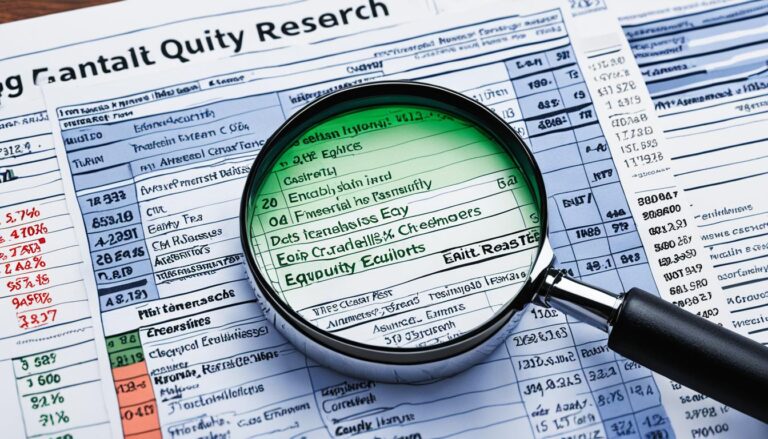Economic Forecasting: Techniques and Trends
In the domain of economic forecasting, a myriad of techniques and trends are continually shaping the landscape of predicting financial outcomes. From the traditional methods of historical data analysis to the integration of advanced machine learning algorithms, the field is evolving at a rapid pace.
Moreover, the influence of macroeconomic indicators, sentiment analysis, and the impact of globalization on forecasting cannot be overlooked. As we navigate through the complexities of today's economic environment, it becomes increasingly essential to stay abreast of the emerging technologies that are revolutionizing the way we perceive and anticipate future economic scenarios.
Key Takeaways
- Thorough data analysis uncovers patterns for accurate economic predictions.
- Macroeconomic indicators like GDP and inflation rates drive forecasting insights.
- Technological advancements like machine learning enhance forecasting precision.
- Global factors and market dynamics significantly impact economic forecasts.
Historical Data Analysis
When examining economic forecasting techniques, a critical component involves the thorough analysis of historical data to identify patterns and trends that can inform future predictions. Historical data analysis plays a pivotal role in understanding the causal relationships between different economic variables and predicting future outcomes. By conducting trend analysis on past economic data, analysts can uncover valuable insights into how certain factors influence one another and the overall economy.
Through trend analysis, analysts can identify recurring patterns in economic data, such as seasonal fluctuations, cyclical trends, or long-term growth trajectories. This analysis helps in establishing causal relationships between different economic indicators, enabling forecasters to make more accurate predictions about future economic conditions. By studying historical data, economists can also discern how external events or policy changes have impacted the economy in the past, providing valuable context for forecasting future scenarios.
Macroeconomic Indicators
Macroeconomic indicators play a pivotal role in economic forecasting by providing insights into the overall health of an economy. GDP trends analysis allows economists to assess the growth or contraction of a country's economy over a specific period, indicating its overall performance.
Inflation rate impact, on the other hand, sheds light on the purchasing power of consumers and the stability of prices within the economy.
GDP Trends Analysis
Analyzing the trends in Gross Domestic Product (GDP) provides essential insights into the overall economic performance of a country. GDP trends analysis is critical for understanding economic growth and sector analysis. By examining GDP data over specific periods, economists and policymakers can identify patterns, strengths, and weaknesses within the economy.
Economic growth, as indicated by GDP trends, showcases the direction in which the economy is moving – whether towards expansion or contraction. Moreover, sector analysis within GDP data reveals the contributions of different industries to the overall economic output. A detailed examination of GDP trends helps in predicting future economic performance, formulating policies, and making informed decisions to promote sustainable economic development.
Inflation Rate Impact
Examining the impact of inflation rates on macroeconomic indicators provides valuable insights into the overall economic stability and performance of a country. Inflation directly influences price stability implications and often leads to interest rate adjustments by central banks to control it. Higher inflation can erode consumer purchasing power, affecting consumer spending patterns.
Also, inflation plays an important role in shaping wage growth dynamics, as rising prices can put pressure on businesses to increase wages to maintain their employees' real income levels. Understanding these interconnections is essential for policymakers and economists to make informed decisions regarding monetary policy, economic growth forecasts, and sustainable development strategies.
Machine Learning Applications
Utilizing advanced machine learning algorithms has become increasingly prevalent in economic forecasting due to their ability to analyze vast amounts of data and extract valuable insights for decision-making. Predictive modeling, a key application of machine learning, allows economists to forecast future trends based on historical data patterns. By training algorithms on historical economic indicators and market data, predictive models can identify correlations and patterns that human analysts may overlook. Additionally, algorithm optimization techniques such as hyperparameter tuning and feature selection enhance the accuracy and efficiency of these models.
Machine learning applications in economic forecasting extend beyond predictive modeling. These algorithms can also assist in identifying complex relationships between different variables, uncovering hidden patterns, and generating more accurate predictions. Furthermore, machine learning techniques enable economists to process and analyze large datasets quickly, providing timely insights for decision-makers. As machine learning continues to evolve, its role in economic forecasting is expected to expand, offering new opportunities for improving forecasting accuracy and enhancing decision-making processes.
Sentiment Analysis in Forecasting
The application of sentiment analysis in economic forecasting introduces a novel approach for leveraging human emotions and perceptions as valuable indicators for predicting future market trends and economic behavior. Sentiment analysis involves the use of advanced algorithms for analyzing social media sentiment and consumer feelings to make predictions through predictive analytics.
Here are four key points to ponder:
- Social Media Sentiment: Monitoring social media platforms can provide real-time data on public sentiment towards products, brands, or economic policies, offering insights into potential market shifts.
- Predictive Analytics: By utilizing sentiment analysis through predictive analytics, businesses and policymakers can anticipate consumer behavior and adjust strategies accordingly to stay ahead of market trends.
- Consumer Sentiment: Understanding consumer sentiment through sentiment analysis allows for more accurate predictions of purchasing patterns, helping businesses align their offerings with consumer preferences.
- Impact on Market Trends: Sentiment analysis can influence market trends by identifying shifts in public perception, which can impact investment decisions and economic forecasts.
Globalization Impact on Forecasts
The impact of globalization on economic forecasts is profound, with global trade effects being a key consideration. Currency exchange rates play a vital role in forecasting models, influencing the competitiveness of countries and the value of investments.
Additionally, supply chain disruptions caused by global events can substantially alter economic projections, requiring forecasters to adapt quickly to changing circumstances.
Global Trade Effects
Incorporating the interconnectedness of global markets into economic forecasting models has become imperative for accurate predictions in an increasingly complex trade landscape. When considering global trade effects in economic forecasting, factors such as the impact of trade tariffs on market dynamics and evolving import/export trends play a vital role.
To enhance forecasting accuracy, analysts must pay close attention to the following key aspects:
- Trade Tariffs Impact: Evaluating the effects of imposed tariffs on international trade flows and market behavior.
- Import/Export Trends: Monitoring shifts in import/export patterns to anticipate changes in demand and supply dynamics.
- Global Supply Chain Disruptions: Analyzing disruptions in global supply chains to predict potential bottlenecks or interruptions.
- Regional Trade Agreements: Understanding the implications of regional trade agreements on cross-border trade and market competitiveness.
Currency Exchange Rates
Currency exchange rates play an important role in shaping economic forecasting models by reflecting the impact of globalization on market forecasts. Fluctuations in exchange rates influence market speculation and pose challenges for risk mitigation strategies. Geopolitical factors such as trade agreements, political stability, and global economic conditions contribute to the volatility of currency values.
Forecasting economic trends requires a deep understanding of how these factors interact to affect exchange rates. Additionally, currency exchange rates are closely tied to a country's economic stability, making them a critical indicator for forecasting models. Analysts must continually monitor and assess these rates to make informed predictions about future economic conditions, considering the intricate relationship between currency values and global market dynamics.
Supply Chain Disruptions
Given the interconnected nature of global markets, disruptions in the supply chain have emerged as a significant factor impacting economic forecasting models, particularly with the increasing influence of globalization on forecasts. When considering supply chain disruptions, two key areas come into focus:
- Inventory Management: Fluctuations in inventory levels due to delays or interruptions in the supply chain can lead to inaccurate forecasts and affect production schedules.
- Transportation Logistics: Issues such as port closures, capacity constraints, or transportation delays can disrupt the flow of goods, impacting the timely delivery of products to consumers.
- Production Delays: Disruptions in the supply chain can result in production delays, affecting the overall output and revenue forecasts of businesses.
- Cost Fluctuations: Supply chain disruptions can lead to cost fluctuations, impacting budget forecasts and profitability projections.
Emerging Technologies in Forecasting
Utilizing artificial intelligence and machine learning algorithms has become increasingly prevalent in modern economic forecasting techniques. These technologies enable the integration of vast datasets and the application of predictive analytics to forecast economic trends with greater accuracy. Predictive analytics allow analysts to identify patterns and relationships within the data, empowering them to make informed predictions about future economic conditions.
Moreover, data visualization plays an important role in enhancing forecasting processes by translating complex data into easily understandable graphs, charts, and dashboards. This visual representation of data enables decision-makers to quickly grasp key insights and trends, facilitating more effective strategic planning and decision-making.
Incorporating these emerging technologies into economic forecasting not only improves the accuracy of predictions but also enhances the efficiency of the forecasting process. By leveraging artificial intelligence, machine learning, predictive analytics, and data visualization tools, economists and analysts can gain deeper insights into market dynamics and make more informed forecasts to guide business strategies and policy decisions.
Conclusion
To sum up, economic forecasting techniques have evolved over time, incorporating:
- Historical data analysis
- Macroeconomic indicators
- Machine learning applications
- Sentiment analysis
- The impact of globalization
As technology continues to advance, new tools and methodologies will shape the future of economic forecasting.
Just as a compass guides a traveler through uncharted territory, these techniques serve as a guide for steering decision-makers towards success in the complex landscape of economic predictions, helping to steer decision-makers towards success.







